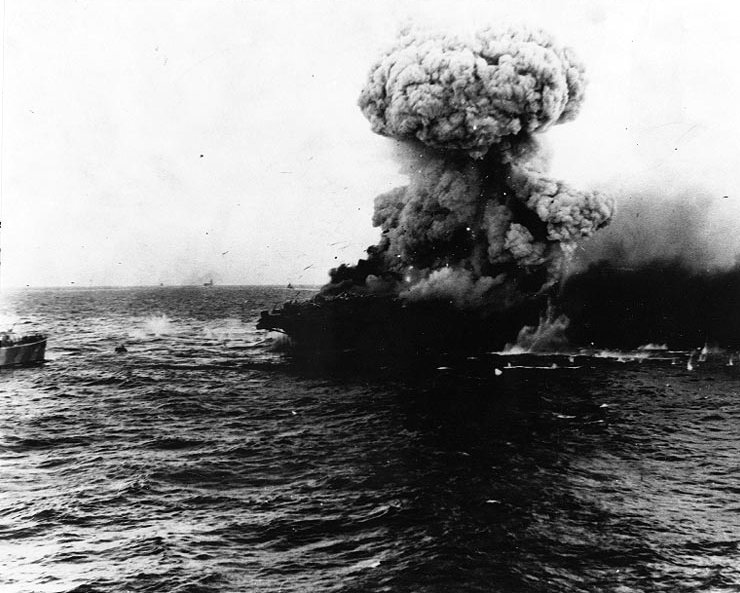
In the important Battle of the Coral Sea, aircraft carriers engaged each other for the first time. There was no visual contact between them, but they launched aircraft at each other.
On this day in 1942, a battle the likes of which was never seen in history thus far raged in the southern part of the Pacific. Opposing aircraft carriers clashed for the first time. In past naval battles there was always a direct contact between the ships, which fired one at the other using their guns.
In the battle on this day the rival ships could not see each other, i.e. there was no visual contact between them, but launched aircraft at each other. This battle took place in the Coral Sea – a large sea area next to Australia, into which the forces of the Japanese Imperial Navy had brazenly penetrated. It was a dangerous situation for the Australians, because now there was nothing except the sea, separating the Japanese from Australia. The commander of the Japanese fleet was Admiral Shigeyoshi Inoue. He had at his disposal two large aircraft carriers (Zuikaku and Shōkaku) and one light carrier (Shōhō). The flagship of Admiral Inoue was the cruiser Kashima.
The American commander was Admiral Frank Fletcher. He also had two big carriers (USS Yorktown and USS Lexington). During the battle, enemy carriers assailed each other with massive air attacks. At the beginning, the Americans managed to sink the smallest Japanese aircraft carrier, Shōhō. Japanese strikes damaged both U.S. carriers, so that the USS Lexington even had to be abandoned and scuttled. Both of the larger Japanese carriers were also damaged.
All in all, the Japanese were victorious according to the number of sunken ships, but the Americans took the strategic victory. Namely, it was the first time that Japan’s expansion was effectively stopped. Damage to Japanese carriers played a major role in the later American decisive victory at Midway.




